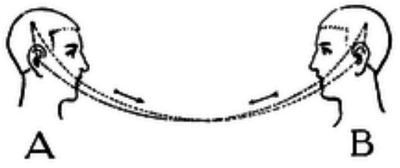
This paper investigates Jacques Derrida's notion of grammatology in the context of contemporary digital writing technologies. It critically reassesses Ferdinand de Saussure’s linguistics and his concept of phonocentrism, underscoring phonography’s underestimated role in shaping the epistemological foundations of linguistics. Introducing original concepts such as the "logographic hiatus" and "grammatological polyphony," the paper challenges the limitations inherent in alphabetic linearity, particularly through the analysis of logographic writing systems like Chinese. Drawing on recent advancements in cognitive neuroscience, notably Stanislas Dehaene’s Neuronal Recycling Hypothesis, the paper proposes a neuro-grammatological framework. It argues that the human brain repurposes pre-existing neural circuits for reading, aligning visual symbols with ecological and neurological constraints. Further, the study addresses Derrida’s concept of "Mondialatinisation," examining the implicit cultural hegemony perpetuated through Latin-alphabet-based digital input methods (e.g., Romaji, Pinyin). This critical analysis highlights the subtle yet profound epistemological and cultural implications of imposing phonocentric and alphabetic models on traditionally logographic languages. Finally, the paper underscores the unresolved civilizational tensions emerging from the digital transformation of writing, emphasizing the urgent need for interdisciplinary dialogue bridging linguistics, semiotics, neuroscience, and cultural studies
The digital age, with its ubiquitous social media, has transformed sociability and socialization, creating opportunities for accessing diverse knowledge, but also new symbolic boundaries. In a connected society shaped by identity politics, this article proposes an intercultural reading of social tensions relayed online. It advocates an interpretive approach to intercultural communication, understanding cultures and identities as resources individuals use to negotiate and co-construct meaning in interactions. Based on examples of social tensions relayed or seemingly aggravated by digital media, it distinguishes two forms of interculturality in this context: "forced otherness," where individuals are reduced to stigmatized identities, and "unconscious otherness," where algorithmic personalisation is used by individuals to support particular worldviews on given topics. The article draws on theories of conflict mediation, identity, and intergroup relations to analyse and potentially mitigate social tensions in the digital age, emphasizing the need for media literacy and a nuanced understanding of intercultural dynamics.

